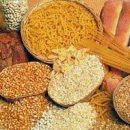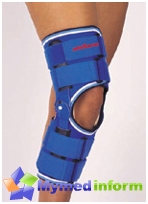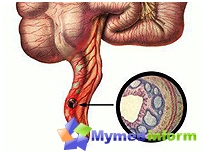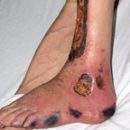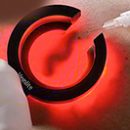Everyone who happened to encounter the problem of treating trophic ulcers, do not know how much it is a difficult task. Therefore, most difficult to believe that we exist and are actively used wound coverings, the effect of which is noticeable after one day of use!
Content
Everyone who happened to encounter the problem of treating trophic ulcers, do not know how much it is a difficult task. Therefore, most difficult to believe that we exist and are actively used wound coverings, the effect of which is noticeable after one day of use! Sounds like fiction? Then we recommend reading…
According to statistics about three million inhabitants in Russia only suffers from incurable trophic ulcers for months and years *. Is it possible to find a really effective solution available to all in need of help, regardless of the geography of residence and the status of the wallet?
Obsession of Russian science
The basis of the scientific developments of Russian research institutes is the long-term experience of fundamental science.
True patriots of their case, Russian scientists create not just effective drugs and materials, and formulas and technologies, a radically changeable look at the usual things, and therefore - things are inherently ingenious.
From theory to practice: a new class of active wound coatings for the treatment of trophic ulcers
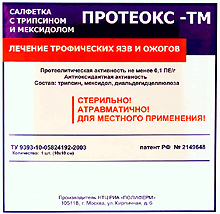 One of these developments of advanced Russian scientists became biologically active wound coatings of a new generation for the treatment of trophic ulcers of Proteox-TM, PAM-T and Multifers, created by specialists of the research institute of textile materials (GK «Rostechnology») Under the leadership of Professor, Doctor of Technical Sciences, Academician of the Russian Academy and Academy of Medical and Technical Sciences Vladimir Nikolaevich Filatova.
One of these developments of advanced Russian scientists became biologically active wound coatings of a new generation for the treatment of trophic ulcers of Proteox-TM, PAM-T and Multifers, created by specialists of the research institute of textile materials (GK «Rostechnology») Under the leadership of Professor, Doctor of Technical Sciences, Academician of the Russian Academy and Academy of Medical and Technical Sciences Vladimir Nikolaevich Filatova.
These are unique materials designed at the molecular level, that is, the methods obtained by methods of molecular modeling. It is the production technology that allows you to achieve a rapid and pronounced therapeutic effect in the treatment of trophic ulcers and purulent-necrotic wounds - noticeable visible changes after the first application!
This is a new class of medical materials whose uniqueness allows them to be attributed both to medicinal and to dressing agents. Active components of wound coatings - enzyme complexes and antioxidants.
Patent search showed the absence of domestic and foreign analogues.
Particularly attractive in these inventions is the price and their availability for almost everyone.
What is the secret of the effectiveness of wound coatings of Proteox-TM, PAM-T and Multiferms?
Medicines and biologically active substances are included in the structure of the therapeutic layer by means of a solid chemical bond between the medicine and the carrier (which provides a long action). Therapeutic layer allocates microparticles of medicinal substances into the wound. This makes it possible to avoid all the shortcomings of the treatment of enzymes, which are observed when used in the composition of ointments, soures or solutions.
Wound coatings of Proteox-TM, PAM-T and Multifers reduce the treatment time of the ulcers 2-3 times and have a number of expressed advantages:
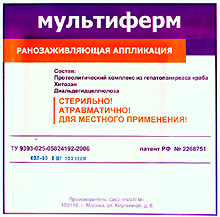 Very quickly cleanse ulcers from purulent necrotic masses and detritis, «Working» according to principle «Biological scalpel» - This means that the purification of ulcers occurs efficiently and without damage to living tissues, eliminating the patient from moral and physical suffering.
Very quickly cleanse ulcers from purulent necrotic masses and detritis, «Working» according to principle «Biological scalpel» - This means that the purification of ulcers occurs efficiently and without damage to living tissues, eliminating the patient from moral and physical suffering.- Stimulate the formation of granulation tissue and the beginning of the edge epithelialization. The effect is noticeable from the first days of application, the healing of ulcers occurs 2 times faster than in the treatment of traditional methods.
- Minimize the medicinal burden on the patient's body through the use of medicinal microgenic substances, minimizing the possibility of developing side effects, irritation and pain.
- Due to the inclusion in the therapeutic layer of antioxidants (mexideol), the number of free radical reactions in tissues reduce, improve microcirculation and cellular breathing.
- Provide an irreversible outflow of the wound exudate from the bottom of the wound, they will burn inflammation, have a local pectoris.
- Make it possible to eliminate antibiotics.
- Fully atraumatic - do not cause pain when changing the bandage, since they do not stick to the damaged surface (with proper use - the dressing must be moistened).
Why the usual treatments for trophic ulcers often «does not work»?
Often an ulcer try to treat, applying antibiotics to reduce microbial pollution. At the same time, these scientific literature and clinical experience show that the use of antibiotics has a number of restrictions:
- Danish scientists (Institute for Study Reparation. Copenhagen) proved that pollution of chronic wounds with a large number of microorganisms does not affect the healing speed, while some bacteria (STR. Hemolytikus) or their toxins (for example, exotoxin A / Paeruginosa), even in small quantities, represent a serious problem for treatment.** In addition, under the influence of antibiotics, for example, streptococcus almost completely disappears, but do not disappear by vulgar protea and a cinema wand.
- The concentration of the drug is required to suppress the microbial microflora to be preserved in the wound for a short time, a number of antibiotics slow down wound healing, and also reduces the strength of reconstructed fabrics.
- The use of antibiotics is ineffective while the wound is purulent and necrotic masses ***, which are a favorable environment for the development of pathogenic microorganisms and infectious pathogens. That is why the effective cleansing of the wound and the removal of dead fabrics from it is a paramount task.
To solve this problem, an attempt was made to use proteolytic enzymes in the composition of sprinkles, ointments or solutions, which was also not enough effective for a number of reasons: the enzymes were rapidly washed out of the wound; It was subject to autolysis (self-destruction), the change of the dressings should have occurred quite often and there was a very high consumption of expensive enzymes.


